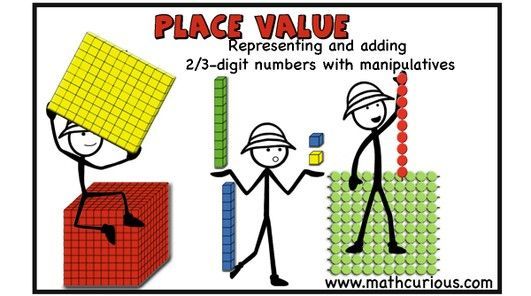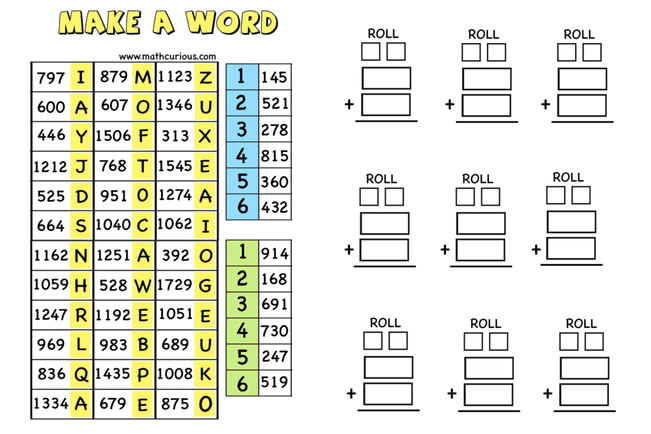Multi-digit addition and subtraction practice is often tiring and boring for the students, however, the practice is necessary. Many of you have been asking for 2,3,4-digit addition games. The truth is that I haven’t shared any because concepts like multi-digit addition that need the students to take time and do calculations are not offered for the most fun games. This year my students really needed the practice so I thought about it a lot and I believe that I have created some game-like activities that will motivate students and will add some excitement to solving two or more digit addition problems.
As you might know by now I like to create low floor- high ceiling games that can be played by all students by providing visual help on the board or adding manipulatives. This is not possible with the activities below as they are mostly a motivation for practicing the addition and subtraction algorithm. Make sure that your students understand the concept of regrouping before trying these activities or allow them to use manipulatives to solve the problems when they need to. Use base 10 blocks to represent and add numbers. The resource below might be helpful.
Place Value – Representing and adding 2/3 digit numbers with manipulatives

Game 1 – Four in a row

How to play
The students use two 6 face dice or roll one dice twice. The first dice/roll will give them a number from the first column and the second dice roll will give them a number from the second column. They can use two different color dice, one for the first row and one for the second. They add the numbers they got. (They do this on their own draft paper or use the template above. The students need to have “proof” that they did the calculations. Also, with the students having their calculations organized on a paper you can easily review a few combinations for the whole class or check their work individually.)
For subtraction practice, the students subtract the smaller number from the greater one.
Once they get an answer from their dice combination they find it on the board/grid and mark it by coloring it. If the students don’t find the answer on the grid they know that they need to check their work. If a tile is taken by another player they just wait for their next turn. The first player/team to get a 4 in a row vertically, horizontally, or diagonally wins. The players can both roll for their numbers and then do the calculations at the same time instead of waiting for each other. To play in pairs or groups the players roll and do the calculations together and compete with another team as to who got 4 in a row first or the most four in a row.
You can use the board as a worksheet and a single-player game/activity. The students are given a number of problems to solve and then check if they got 4 in a row. They can also race to who will get 4 in a row first.
Game 2 – Make a word

How to play
This game is similar to the one above except it has a bit more thinking to it as the players need to make a word with the letters they get. The players/pairs/groups take turns rolling the 2 dice, they both get their 2 numbers, and then at the same time do their calculations on the template or not. I ask them to use the template so that we can review some combinations and also to make sure everyone is playing fairly. Once they get the answer they mark it on the letter grid. As they start to get a few letters they try to make a word. The first player/pair/group to make a word wins. We allow only 3 and more letters words.
For subtraction practice, the students subtract the smaller number from the greater one.
We play this game mostly in pairs. 2 students play as a team and they solve together competing with the other pairs in their group. I usually give a number of problems to solve to keep things fair. You can use the board as a worksheet as well or a single-player game/activity.
You can use the board as a worksheet and a single-player game/activity. The students are given a number of problems to solve and then check if they got a word with their letters. They can also race to who will get a word first.
You can download the free versions below (3-digit)
The premium version includes 6 boards for each game (3-digits, 2-digits, and 4-digits addition and subtraction) templates to create your own and a template for the calculations. This collection will be a growing one with more of these game boards added soon for addition and subtraction.
Check out the multi-digit multiplication and long division games as well
Find the bundle with all 3 resources addition, subtraction, multiplication, and division games at a better price here




















